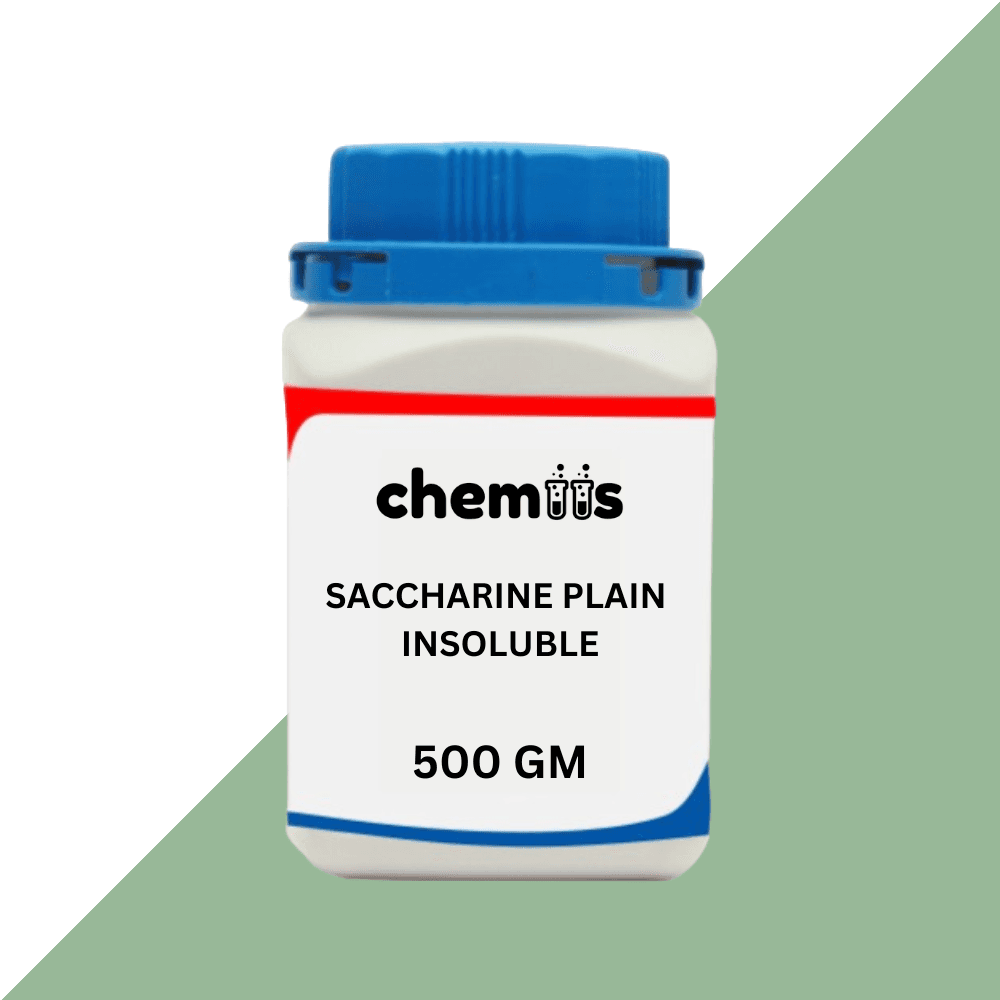Saccharine Plain Insoluble is a synthetic, non-nutritive sweetener widely used as a sugar substitute in various industries. It is characterized by its high-intensity sweetness—approximately 300 to 500 times sweeter than sucrose—while being calorie-free. Due to its insoluble nature, it is commonly used in formulations where minimal solubility in water is required. Saccharine Plain Insoluble is used in food, pharmaceuticals, and industrial applications, providing a cost-effective and long-lasting sweetness without contributing to blood sugar levels or calorie content.
Applications
1. Food and Beverage Industry
- Low-Calorie and Sugar-Free Products:
- Used in sugar-free chewing gum, candies, baked goods, and confections.
- An ingredient in calorie-free sweeteners for beverages like tea and coffee.
- Shelf-Life Enhancements:
- Retains sweetness over long periods, making it ideal for packaged and processed foods.
- Specialty Diets:
- Suitable for diabetic-friendly and keto-friendly food products.
2. Pharmaceutical Applications
- Sweetening Agent in Medicines:
- Adds sweetness to oral medicines, syrups, and chewable tablets without affecting blood sugar.
- Coatings:
- Used in the coating of pills to enhance palatability.
3. Cosmetic and Personal Care Industry
- Flavoring Agent:
- Adds mild sweetness to toothpaste, mouthwashes, and lip products.
4. Industrial Applications
- Electroplating Industry:
- Utilized as an additive in nickel electroplating baths to improve deposit characteristics.
- Specialty Chemicals:
- Acts as a non-reactive sweetener in various chemical processes.
5. Research and Development
- Ingredient Testing:
- Used in laboratory studies to develop and test new formulations of sugar-free products.
Safety and Handling
Hazards:
Saccharine Plain Insoluble is generally recognized as safe (GRAS) for consumption when used within approved limits. However, some precautions are necessary for handling the powdered form in bulk.
- Inhalation Risk: Fine powder may irritate the respiratory system if inhaled.
- Eye and Skin Contact: May cause mild irritation upon contact.
Precautions:
- Personal Protective Equipment (PPE):
- Use gloves, safety goggles, and a mask to minimize contact with the powder.
- Storage:
- Store in an airtight container to prevent contamination and maintain product integrity.
- Handling:
- Avoid generating dust. Work in a well-ventilated area or under a fume hood.
First Aid Measures:
- Eye Contact: Rinse with plenty of water for 10–15 minutes. Seek medical advice if irritation persists.
- Skin Contact: Wash with soap and water. Discontinue use if irritation develops.
- Inhalation: Move to fresh air and seek medical attention if breathing becomes difficult.
- Ingestion: Generally safe in food-grade quantities, but seek medical attention in case of discomfort or adverse reaction.
Disposal:
Dispose of in accordance with local and national regulations. Avoid releasing large amounts into water systems.


















Reviews
Clear filtersThere are no reviews yet.